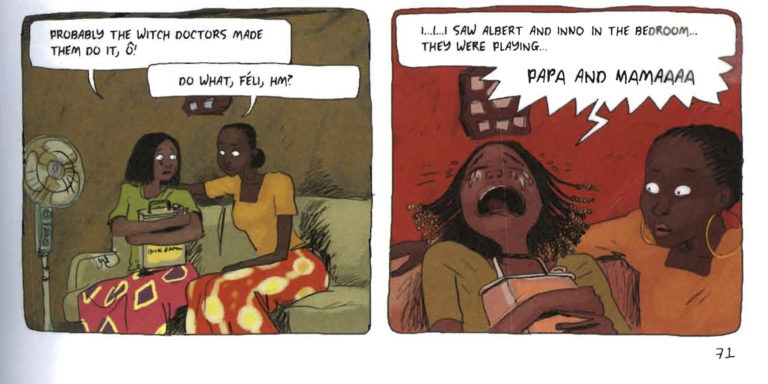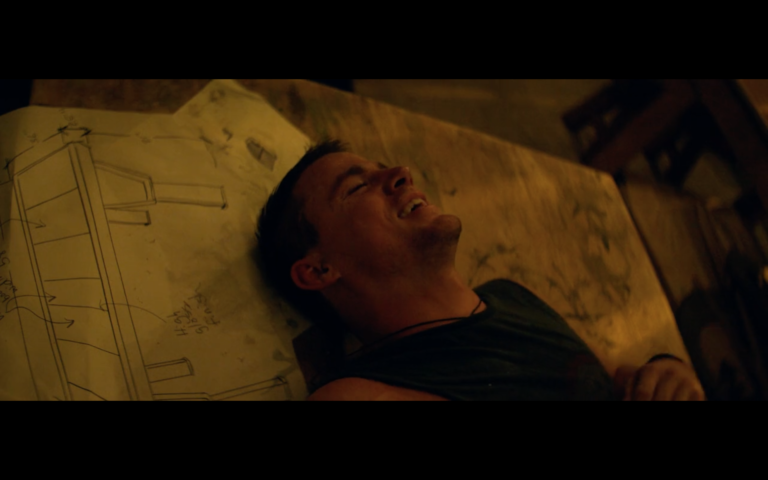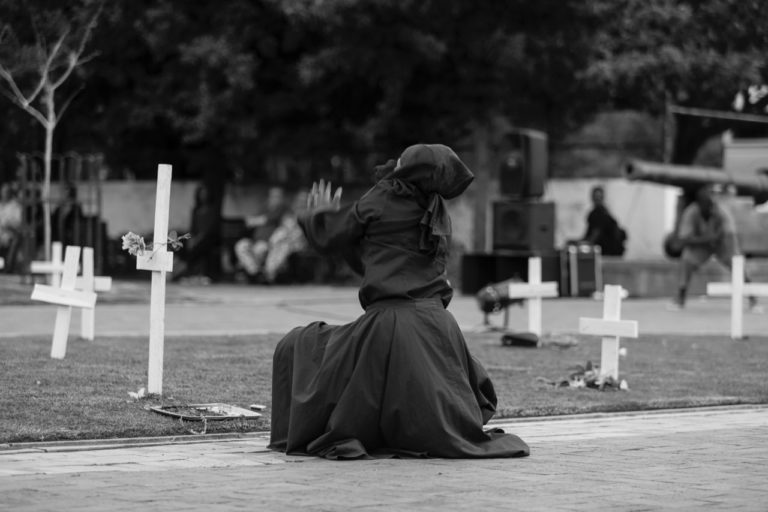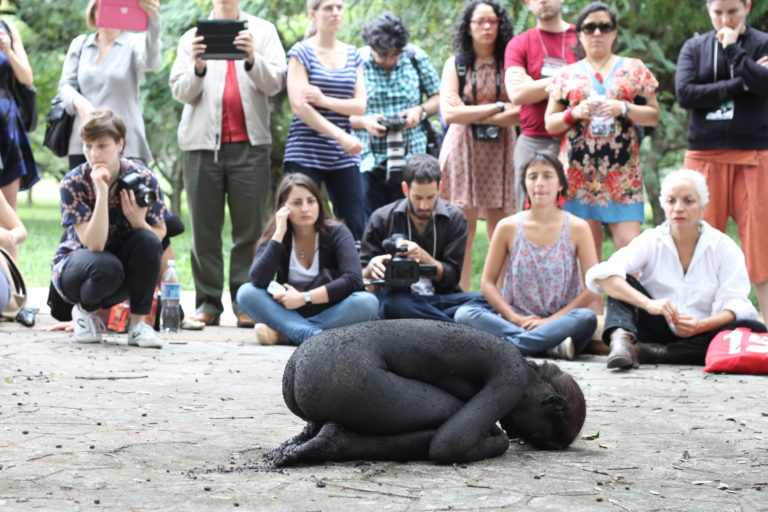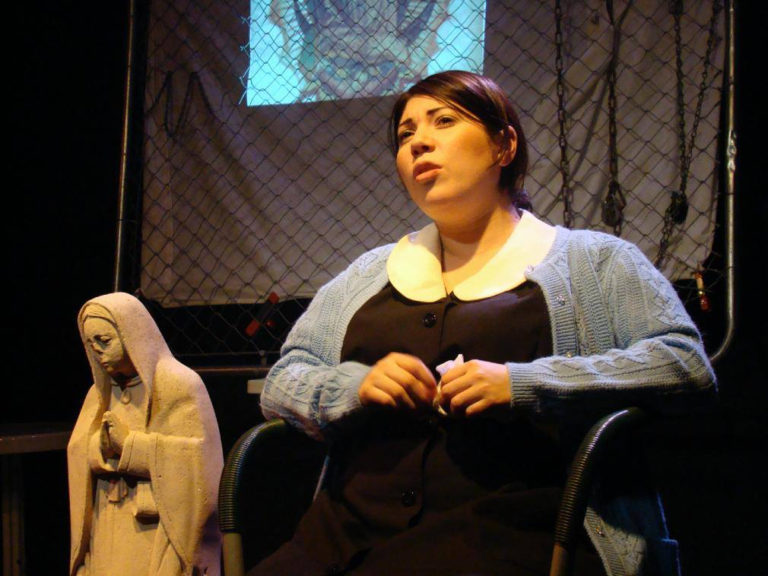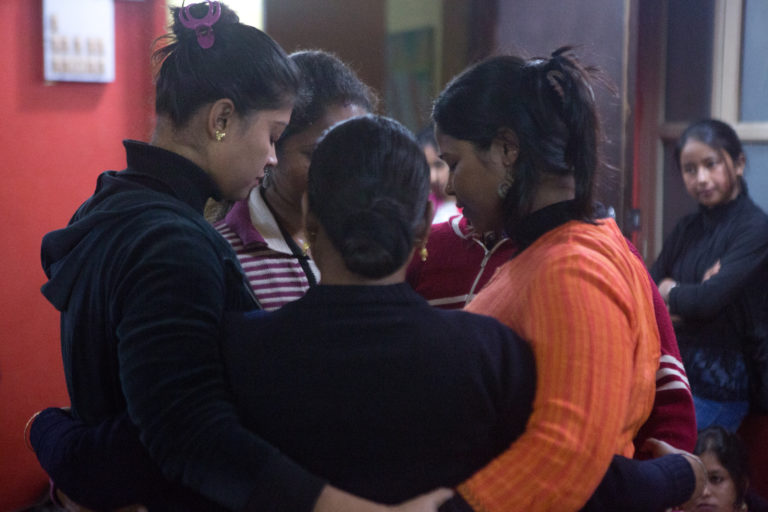In this poem, I explore what various politicians have stated about immigrants using pest metaphors while interweaving pest control discourses. A pest is an animal that is “out of place.” Immigrants, too, are often “out of place” or “uprooted” or in between places. They live between the world in which they are from and the world in which they inhabit presently, never fully fitting into either world. As there is a multiplicity of immigrants who choose to cross the border from Mexico, there is also a multiplicity of pests who cross different kinds of borders and boundaries. Pests and immigrants are liminal beings, making some people uneasy. My intention here is not to universalize the figure of the immigrant nor the figure of the pest, but instead to explore the complications of immigration-pest discourse in US political cultures.
Articles
Peer-reviewed articles in cultural studies.
Minor Miracles: Toward A Theory of Novelty in Aya of Yopougon
This essay undertakes a reparative reading of Aya of Yopougon, a multivolume graphic novel by Marguerite Abouet and Clément Oubrerie. Setting Aya alongside other African comics and prevailing interpretations of African and Diasporic literatures, this interpretation coins the term “novelty” to describe the unique mode of representing subjects, space, and time in the text. This “novelty” situates Aya at the intersection of tendencies in African, European, and North American comics art, and it juxtaposes subtle renditions of everyday life with overdetermined representations of African societies and Africans in Diaspora. The essay also articulates the relevance of novelty for feminist, queer, and postcolonial theories, comics scholarship, and Diaspora Studies.
Every Little Thing He Does: Entrepreneurship and Appropriation in the Magic Mike Series
This essay analyses the theatricalized performance of stripping in the popular films Magic Mike (2013; dir. Steven Soderbergh) and its sequel, Magic Mike XXL (2015; dir. Gregory Jacobs). Following a critical dance studies approach that attends to the intersection of body and gesture with socio-political, historical, and economic structures, I suggest theatricalized sexual labour in these films reveals the racial exclusions from the ideology of entrepreneurship. Considering the appropriation of black aesthetics in Magic Mike XXL’s performances of striptease, the film seeks to evaporate the spectre of race, that is, the way the white fantasy of the entrepreneurial subject is supported by the appropriation of racialized and especially black labour.
Target Markets and Logistical Management
This paper demonstrates how target marketing provides valuable point-of-sale and point-of-interaction insights, and argues that the labor theory of value is untenable for understanding the conditions of leisure-time surveillance and data aggregation. It then provides a close reading of an Amazon affiliated fulfillment center exposé in order to examine precisely how the information produced during leisure-time surveillance intensifies the exploitation of fulfillment center labor. Target marketing is part of a larger apparatus that aggregates data for the purposes of assigning risk, differentiating prices, and managing supply chains and labor costs.
Ethics, Collaboration, and Knowledge Production: Digital Storytelling with Sexually Diverse Farmworkers in California
This article outlines the digital storytelling methods used for a community based research project focused on issues of sexuality among California farmworkers: Sexualidades Campesinas. We note how our process of collaboration in the creation and production of digital stories was shaped by the context and our envisioned storytellers. We then offer a critical analysis of our own unique experience with digital storytelling in this project, focusing on a handful of concepts key to understanding the nature of our collaborative production process: community, affect and collaboration, storytelling, performance, and mediation, with an eye to the problem of ethics.
Sing For Your Supper: Pauperism, Performance, and Survival
Come what may the house enables us to say: I will be an inhabitant of the world, in spite of the world.1 This essay presents a piece of performance research that brought together a theatre-maker/performer and a theatre researcher to explore the relationships between theatre and poverty. Our collaboration was just one part of a broader research project,…
“A Day for Us to Mourn”: Unsettling Performances of Marikana
Introduction On the 16th of August 2012 thirty-four Lonmin miners lost their lives at Marikana in South Africa. They were killed by the police who—after failed, ignored, or impeded negotiations with the striking miners—were assigned by the Lonmin Board of Directors and the mining unions to demobilize and dismantle the striking mass present at the…
The Maid Vanishes
This essay begins with two brief accounts—one of arrival and the other of vanishing. It was the late summer of 2005 when we—my partner, young daughter, and I—moved to the UK, where I was to take up a lectureship at the School of Theatre, Performance and Cultural Policy Studies at the University of Warwick. I…
Circuits of Invisibility: Performance, Violence, and Sexuality
The body is a repository of metaphors and within its function of global exchange, its limits of fragility and destruction, the body serves as a way of dramatizing the social text. Olivier Mongin, in his important study on film and modernity, has said that there is currently an “economía de las imágenes de violencia… [en…
Death on the US-Mexico Border: Performance, Immigration Politics, and José Casas’s 14
Jimmy Noriega looks to theatrical performance as a method for engaging the subject of “illegal” immigration and, in particular, the death of undocumented migrants. He argues that theatre can provide an avenue by which to generate both a private and public discourse that allows for a more nuanced and fair treatment of migrant death, which is especially significant in comparison to the representations offered by the typical media coverage. Rather than focus on several texts, this essay analyzes one play—14 by José Casas (2003)—and the ways it engages with mass migrant death and the myriad of responses to it.
Touring Testimonies: Rebalancing the Public Realm through Human Rights Activism in Asylum Monologues and Seven
In the contemporary globalized world, the life stories of marginalized and vulnerable peoples play a crucial role in attempting to leverage justice. Charities, non-governmental organizations (NGOs), and other bodies concerned to “raise the voices” of asylum seekers, displaced peoples, and victims of abuse flood the internet and other media with written and filmed testimonies in…
Concealment, Revelation, and Masquerade in Europe’s Asylum Apparatus: Intimate Life at the Border
In 2010, a landmark UK Supreme Court case was won on behalf of two gay men, from Cameroon and Iran, whose applications for asylum due to sexual identity had previously been rejected on the basis of a prevailing “reasonable tolerability” concept—that is, the view that gay applicants could conceal their homosexuality by acting discreetly upon…
Coerced Performances? Trafficking, Sex Work, and Consent
Since the millennium, there has been a growing global awareness about the business of human trafficking as it has exponentially expanded in relation to the neoliberal economic climate, the vast displacement of people through wars and conflict, and the growth of tourism and e-commerce. Because theatre and performance studies work through an epistemology of embodied…
Affective Labors: Love, Care, Solidarity in the Social Reintegration of Female Ex-Combatants in Colombia
In the Battlefield What can you tell me about love? This question was often followed by a combination of nervous laughter and bitter smiles. Thoughtful silence. As if love could not be part of life in the guerrilla ranks. As if love was not part of everyday life in times of war. Perhaps the former…
Mediations around an Alternative Concept of “Work”: Re-imagining the Bodies of Survivors of Trafficking
When I was rescued by the police and put in a shelter home, I felt angry. I did not know any other work. Before, I just had to lend my body and the work got done. I got paid, without having done anything (Poolish jokhon amake uddhar kore Shelter home e dilo, khoob raag hoechhilo.…

